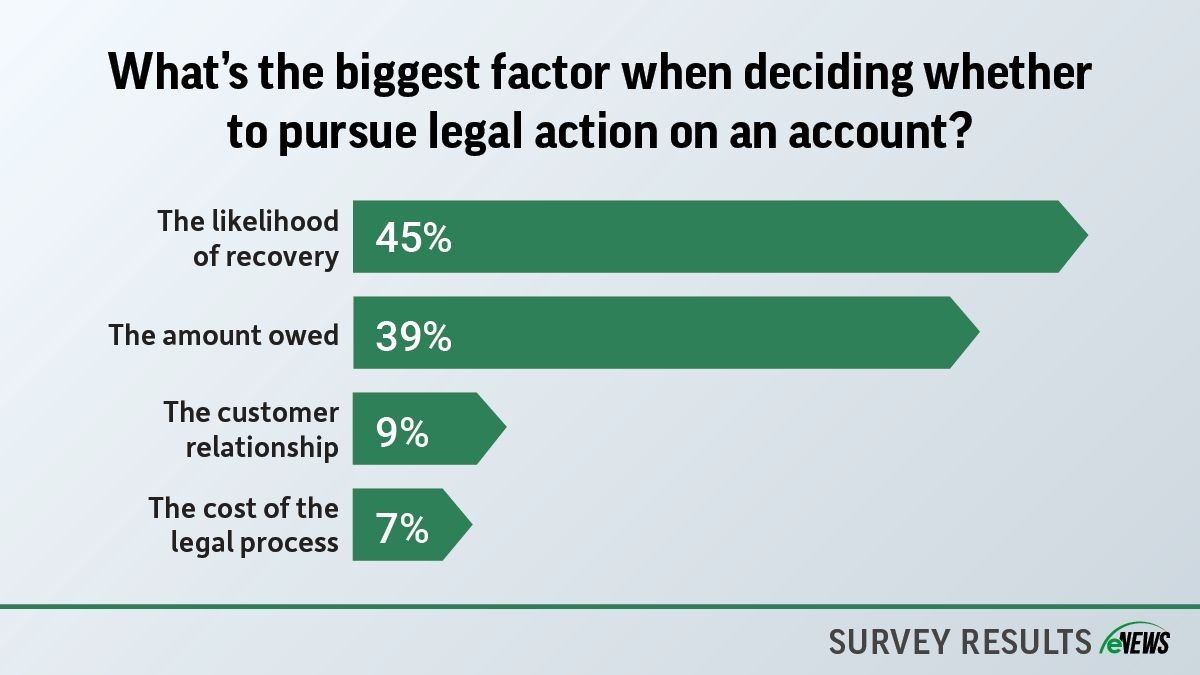Business Practices, eNews
The debate over combining credit and collections functions

The debate over whether to combine or separate credit and collections functions is a hot topic in the B2B credit industry. Companies on both sides of the argument offer compelling reasons for their approach.
Why it matters: Credit managers should decide to separate or combine the functions based on what works best for them, including industry needs, workload and company size.
The argument for separating credit and collections
Credit analysis and collections often require different skill sets—credit analysts are typically more focused on evaluating financial statements, assessing risk and determining credit limits, whereas collections teams are responsible for recovering overdue payments and managing customer relationships. This division ensures that each function gets the attention and expertise it needs, improving efficiency and decision-making.
In larger departments, where there are sufficient personnel to manage diverse tasks, it may be more practical to separate the credit and collections functions. “We have two team members responsible for credit review and assigning limits across our portfolio and the rest of the team is responsible for collections, dispute resolution and other tasks as needed,” said Leila Wolfe, CBA, credit supervisor at Fender Musical Instruments Corporation (Scottsdale, AZ). “Since we have demanding daily needs, this method allows us to timely tackle customer requests while minimizing high credit risk.”
While separating functions may seem like it would inherently hurt collaboration, it can actually have the opposite effect. “We have a specific credit department that specializes in credit analysis and provides a credit limit recommendation based on that analysis,” said Steven Prensner, CBA. “The recommendation is then sent to the collections department and the sales department for all three to collaborate in ultimately determining the credit limit. We have a leadership authority matrix that provides final approval based on the dollar amount of the credit limit requested.”
Having separate credit and collections functions also improves the department’s efficiency and customer service. “Our collectors have the ability to create and maintain relationships with our customers and can give anecdotal or nuanced information on an account to those conducting the credit functions,” Wolfe said. “This two-pronged approach helps to maintain objectivity and a holistic view of a customer’s credit status.”
But stronger managerial control is required when the functions are separate to make sure nothing slips through the cracks. “When there’s out-of-the-norm customer behavior, they will raise it up to the credit analysts, but I’d rather be told about a potential situation and find out that it’s not much of anything than not know about it until it becomes a huge problem,” said Lynn Englund, senior credit development manager at Ingram Micro Inc. (Williamsville, NY). “On the other hand, the collections team is missing the information from the credit review which the credit analyst has.”
The argument for combining functions
With integrated processes, employees can manage both functions simultaneously, eliminating the time spent transferring information between departments. “As part of the medical technology industry, it’s important for us to build relationships and provide better customer service,” said Eric Schlobohm, credit manager at Inspire (Golden Valley, MN). “Because we’re able to build the relationships with specific sites and healthcare organizations (HCOs), we push our primary goals forward from a collection standpoint.”
By mixing the credit and collections functions, you minimize the probability of human error and miscommunication. “We used to have a separate department for collections, and any time an account needed credit, it would first go through the director of credit and in turn, he would call the collector about the account,” said Somer John, AR team lead at Trinity Logistics (Seaford, DE). “Although we’d keep notes for him in the customer’s file, he’d still call to get a general idea of the account.”
Once John’s department combined the functions, communication among the team improved significantly. “The collector can provide necessary information to the credit manager because they’ve established the customer relationship,” she said. “Collectors also talk to accounts receivable (AR) and accounts payable (AP) about cash flow issues or high turnover rates or upcoming projects. Giving collectors access to credit reporting made combining the functions a no-brainer decision.”
The big picture: Regardless of the chosen strategy, open communication and well-defined procedures are essential to ensure the success of either approach to the credit and collections functions.





